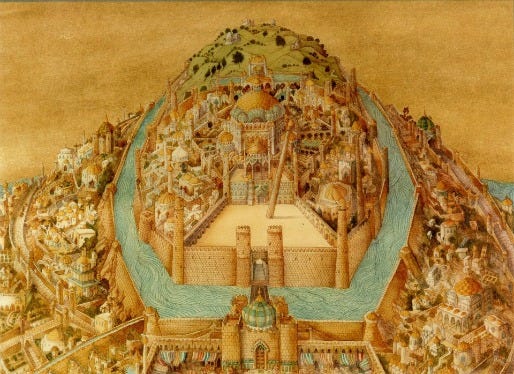Persistence of Vision

For Indy Film Fest showtimes, click here.
Kevin Schreck’s ambitious documentary is the tale of an even more ambitious project. As one observer puts it, “He wanted to create the greatest animation film of all time. But it didn’t happen.”
The “he” is Richard Williams, a legendary British animator best known to American audiences for his work on “Who Framed Roger Rabbit?,” for which he won a pair of Oscars. He ran his own London studio, working on commercials, television and film, and by most reckonings, he’s been a phenomenally successful artist.
But “Persistence of Vision” is about Williams’ greatest failure: a grand idea for a movie that he worked on for nearly three decades, sinking millions of dollars of his own money (and eventually that of a studio, too).
Reconstructing that film would be impossible, but Schreck does the next best thing: carefully assembling the pieces of the story behind it, which is something of a Holy Grail in the animation community. Schreck interviews dozens of animators, experts and friends, though Williams himself declined to participate.
Even 20 years after the film was taken away from him, the memory is apparently still too searing. But we get to see plenty of footage of him talking about it from numerous interviews conducted over the years, plus home movies from the studio archives.
The idea was taken from bits of Persian folklore about Mulla Nasrudin, involving a wealthy but gullible monarch, a scheming grand vizier, a humble cobbler and a disreputable thief. Williams and his collaborators envisioned it as a series of parables and designed a fantastic world for the characters to inhabit.
But it’s clear even to those who adored Williams that his craftsmanship as an animator was not equaled by his ability as a storyteller. The script changed constantly according to his whims. Sequences would go on and on because he liked the way they looked rather than for their possession of any narrative momentum.
“It was a whole bunch of sequences searching for a plot, in the end,” one of his former animators says.
Schreck tracks the plight of the film through its long, sad journey — changing titles along the way from “Nasrudin” to “The Cobbler, the Thief and the Grand Vizier,” “Arabian Knight” and “The Thief and the Cobbler.” At one point, Williams’ partner on the production makes off with the rights to the Nasrudin story along with some embezzled funds.
But Williams also managed to recruit some animations legends to work at his studio, including Roy Hesbitt (“2001: A Space Odyssey”), Ken Harris of Warner Bros. fame and Disney veteran Art Babbitt. And he inspired a generation of young artists, who still speak of him with a touch of awe. To them, he was a stern taskmaster and doting teacher.
In the end, the studio backers dropped out after Williams failed to deliver a finished picture in time. In the meantime, the Disney film “Aladdin” had come out, and Schreck’s cross-cutting between it and Williams’ unfinished movie make clear that the former was heavily influenced by the latter — to use the polite term.
In the 28 years Williams had been slaving away on his masterpiece, the world of animation had changed around him. The doldrums of the 1970s and '80s were gone, but audiences now expected a standard set of princesses and musical numbers in their cartoons.
Eventually, “The Thief and the Cobbler” was completed by others lacking Williams’ vision. Some of his original footage was included, but most was left on the cutting-room floor and replaced with cutesy stuff that doesn’t even have the same visual style.
(It’s available for streaming on Netflix if you want a look at a pale shadow of the intended masterpiece.)
One animator relates the lowest of low points — seeing the movie he worked on for years included as a giveaway in a box of Fruit Loops.
“Persistence of Vision” is a skillfully made and tragic tale about an artist who never compromised his integrity, and, in the end, it cost him.
4.5 Yaps



